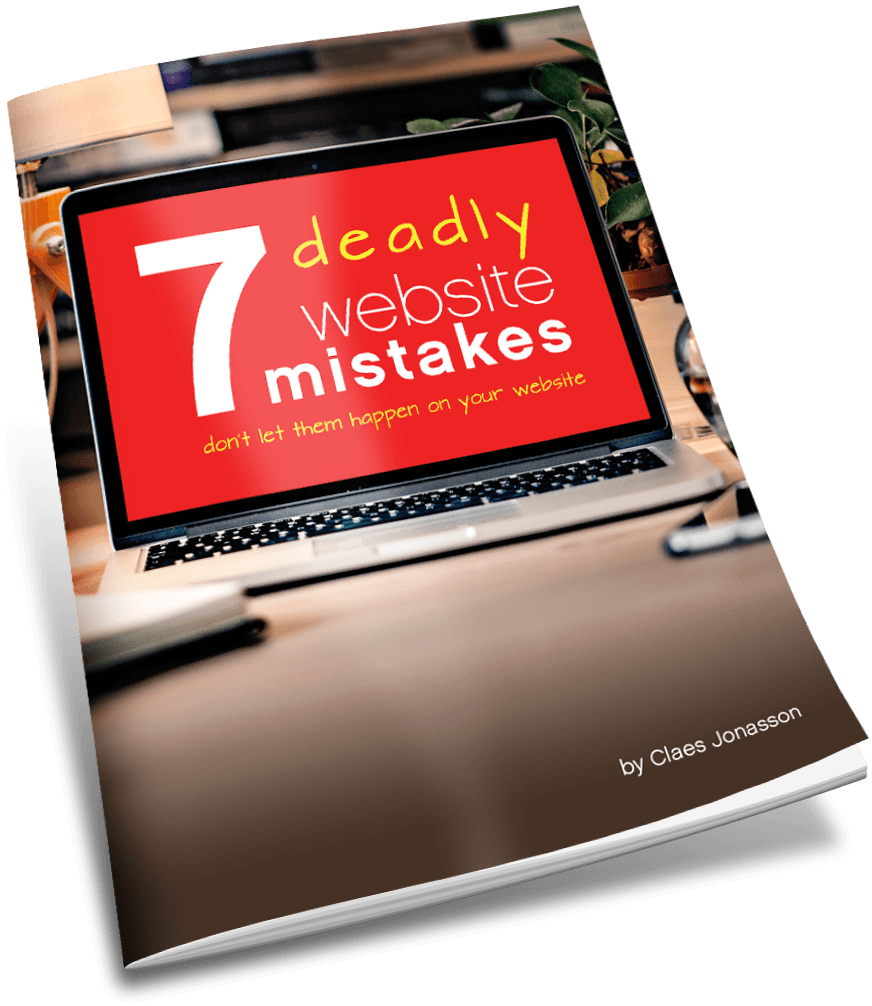The website you always wanted (and need)
I have a friend who is a small business owner. Gets his work by word of mouth. Obviously works quite well for him, since his business has been around for a long time. But he has no website. He thinks he doesn’t need one. Because for the most part, he has new projects coming in. Except when he doesn’t. Then he worries.
Would a website take care of that for him? Not entirely, but it would sure help. A lot.
The reality is that if you’re in business today, or run an organization, people need to be able to find you. Online. Because that’s where they’ll look.
No website. Not found. Or you’re found because someone mentioned you online. Which can be a really mixed bag.
Point is: A solid website is your hub where you have control over how you appear online. You can (and definitely should) connect social media to the website, encouraging people who found you on social media to visit your website. So they can check out that you’re for real.
And that’s the key item my friend is missing out on: His customers provide great referrals. He talks to prospective clients. But there’s no place online for them to go find out more about him. To see some of his great work. And since there’s no way to track those missed opportunities, we don’t know how much he’s missing out on.
Here’s some quick math: My friend’s average project is about $3,000. Let’s say that because people can’t check him out without actually talking to him, he misses out on 1 project every other month. That’s probably low, but let’s be conservative. In a year, that’s $18,000 of income that didn’t happen for him. (6 projects x $3,000 each = $18,000).
Ouch. And that’s just this year. He’s been in business for many years. Now that adds up to really OUCH!
All because people who want his services couldn’t find him online.
Makes having a website (a good one at that) a much easier decision. Right?
Starting with this blog post, I’m going to dive deeper into the magic of websites. First, let’s do an overview of everything that goes into creating and launching a new (or redesigned) website.
Coming posts will go into more detail about each step.
Make it clear: Connecting your business/organization and the web
The example above illustrates the need to be present online with our businesses/organizations. Because how else will people find us? Or check us out once they’ve found us?
I was in a meeting the other day. Talked with a man sitting next to me. Gave him my card. A few minutes later, I saw that he had my website open on his computer. Because he was going to check me out before talking to me further. That was with me right there, in the same room!
Trust is essential in business. So are the 2 other things that go right with that word: Know and like. Before anyone will do business with us, they need to know us, like us and trust us. A good website does wonders for that process. It lets you tell your story. Those interested in you and your offer learn more about you and can begin to see if this might be a good match.
It’s all about building relationships.
Make them look
Any website has about 3 seconds to convince visitors to stick around and explore more. Seriously. That’s less time than the attention span of a goldfish.
I’m talking about what visitors see right away, before scrolling or going to another page. It has to engage.
Most websites consist of multiple pages:
- Home page
- About us
- Product/Service
- Contact us
- Terms/privacy/disclaimer
- Blog
Other websites use a one-page design. Content displays as different sections on one long, scrolling page.
Which type you use, ultimately depends on the amount of content on your website and what’s best for your audience.
Text content is good and your website should definitely have enough of it. There’s no award for using the fewest words. In fact, both human visitors and search engines will penalize a website with too little content.
Images and video are a must to help visitors engage with your message and “get” what you’re about. Even online, it’s still true that an image is worth 1,000 words.
Make it sizzle
So we’ve figured out what the content is that needs to be on that new website to make it stand out and really connect with visitors.
Now it’s time to design the site to look awesome, presenting that content in the best possible way and to help visitors engage with us. Also, the site needs to do well with search engines, so it will show up in all the right places.
Plus, the website must display well on devices of all sizes and at slower connection speeds.
It’s all about making it easy for visitors to find what they’re looking for and then take action. Because, that first impression has to be a good one.
Make it real
So far, it’s been all about planning and designing. Now is the time to actually build the website.
Unfortunately, all too often this is where the process starts. Especially when using “drag-and-drop” style services. Their selling point is how easy it will be for you to just drag and drop your content into predefined spots, or to build a website using a collection of building blocks for things like text, images, video, buttons and so on.
They assume you have the content. But without a solid plan, figuring out content while dragging and dropping will make the process take much longer. And the final product will not be everything it could be.
Much of what goes into making a website perform well (with search engines and otherwise) is also “under the hood”, in places you don’t necessarily see right away.
All that goodness gets added in during the development process. Everything is optimized and tested to perform its best, every time.
The last thing you need is content that is missing (broken links), links that don’t go where they are supposed to, and content that loads so slowly visitors will fall asleep waiting for it (or just go away).
And let’s not forget about making the website secure. Because hackers.
One more thing
All too often our focus is all on building that new, shiny website. Then once it’s done, we ignore it. But a great website is never finished.
Fresh, new content keeps the website relevant and gives visitors reasons to come back.
The website code also needs regular updates, because the web is always changing and new security threats show up far too frequently.
Plus any website needs regular backups. So you’re ready, should something really bad happen one day.
By now the new/redesigned website should be launched, live for the world to see.
In Blue-skying your next website, we dig into the purpose of a website, what it must do for you and important considerations for getting started on the road to a new (or redesigned) website.
Never miss out!
Get an email update every time I publish new content. Be the first to know!

